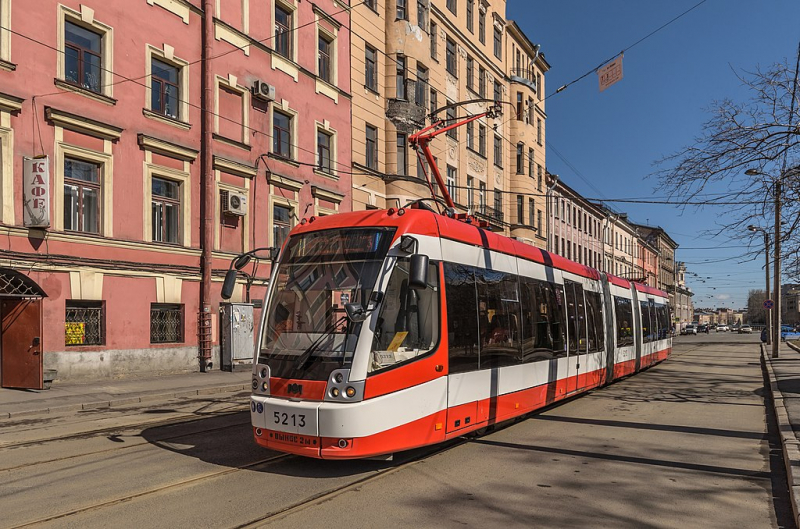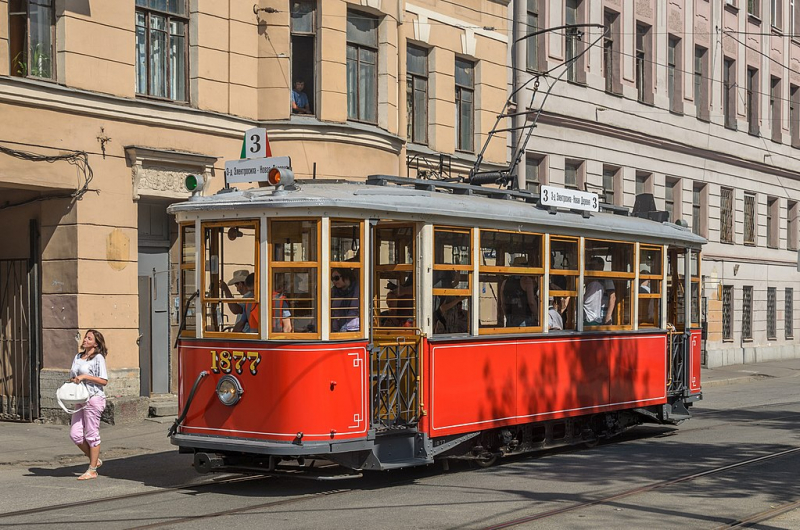Bachelor's student
St. Petersburg’s Electric Transport: Trams
The environmental and financial advantages of employing electrically powered vehicles are undisputed, and these benefits are greater still in the case of public transportation, which, though perhaps not in comfort, in efficiency far surpasses personal vehicles. In this field St. Petersburg has long been at the vanguard.

An example of this would be the tram. The city’s tramway network was once the longest in the world. It was, in fact, surpassed but thirty years ago, and presently ranks fourth in that category, at 228 km. This is because tram routes were shortened from around 600 km in the first years of the new millennium.
In the beginning was the herd
There was little in the way of accessible public transit in St. Petersburg until the mid-19th century. It was but the cream of society who had until then had access to transportation of any kind, in fact, and the city’s workmen had to commute via begrimed footpaths and seldom sidewalks.
This changed in 1847, however, when there appeared a host of omnibuses — sizable horse-drawn carriages. What made this advent particularly impactful was the omnibus' low cost, for it was now a reasonable expense for the commoner.

Not two decades later horsecars were introduced. These were also horse-drawn carriages, except they were often larger than omnibuses, similarly cheap, and ran on steel tracks, which allowed the steeds to haul greater loads with less effort. There were two main types of horsecars: single-deck and double-deck ones. The latter were significantly heavier, and as such were usually drawn by a pair of horses.
Another twenty years would pass until the arrival of the steam bus. It was similar to the horsecar in appearance and size but was indeed a locomotive. These vehicles signified the beginning of a gradual transition away from horse-drawn transportation and were only discontinued in 1922.
A brief history of tram
On August 22nd, 1880, a public demonstration was held by engineer Fyodor Pirotskiy of his new invention: a carriage with an electric engine that was powered through the tracks. This became the city’s first tram. However, the municipal government had already signed several binding contracts with the horsecar syndicate, and its mantle as king of the roads would not yet be usurped by this eager upstart.
The technology would only be adopted in St. Petersburg in 1885, and even then, in a rather limited capacity, as it was only used during winter to transport people over the frozen Neva, connecting the center to Vasilievsky Island and Petrogradskaya Side.

In 1902, the city bought the rights to the urban rail system, and by 1904 a plan had been drafted for the city’s future tramways: the network would be over 200 km long and have over 800 carriages. Construction began the next year, with the main contractor being the American firm Westinghouse Electric Corporation. The grand opening was held on September 29th, 1907.
By 1908, there were 9 tramway lines. Each day, 187 carriages would carry over 230,000 passengers. The demand had swelled, and in 1911 construction began on a second tramway network, which would be halted 5 years later. The interbellum period saw a steady expansion of the system, with more and more tracks laid each year.
During the Second World War trams were used to transport troops and supplies, and rail parks were used to craft ammunition, which is why they were often targeted for bombing. A severe shortage of electric power caused the city’s trams to cease operating in December in 1941.
Thirteen percent of the city’s total track length and 153 carriages were destroyed beyond repair during these years, so extensive repairs had to be conducted before the network could be reopened, which it eventually was in 1947.
The tram’s popularity reached its apex in the 1980's. By this time there were around 1,600 carriages and 900 trolley buses. The routes themselves had also become more organized, with 80% of passengers now commuting without changing lines.

By 1990, there were 10 tram parks and 6 trolleybus parks, the total length of tramway lines in the city exceeded 700 km, and there were over 2,200 operating tram carriages. In that year alone over 950 million passengers were transported. It remained the mode of transportation of choice for most until the end of the century, transporting more people annually than the metro.
Where to learn more about trams
In 1997, a museum dedicated to trams was opened on Sredniy Prospekt V.O. 77, situated on the site of tram park No. 2. Here visitors can intimately examine 30 different tram models (as well as 6 different trolley bus models). These range from the verdant ЗИУ-5 to the legendary МТБ-82Д.
Tram enthusiasts will also want to ride on the tourist tram, which will take them to various landmarks across Vasilievsky Island and the city center, crossing six bridges in the process. The tram itself is an ЛМ-33, which was used between 1933 and 1979.
